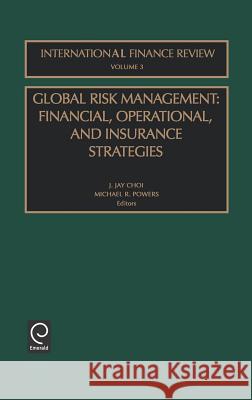Global Risk Management: Financial, Operational, and Insurance Strategies » książka
Global Risk Management: Financial, Operational, and Insurance Strategies
ISBN-13: 9780762309825 / Angielski / Twarda / 2002 / 220 str.
In this age of international terrorism and international economic contagion, it is clear that "globalization" in its broadest sense - i.e., the "breaking down of barriers" - is often a double-edged sword. The world economy of the early twenty-first century offers substantial growth potential and strategic benefits for firms, but it also entails much risk, which must be measured and managed effectively. Consequently, business in today's world must constantly be alert to opportunities afforded by improving technology and financial market integration as they seek to develop successful risk management programs. Often viewed as a narrow field focusing on derivatives or insurance, risk management is in fact a much broader discipline, encompassing operational strategies as well as the financial and/or insurance decisions of the firm. This is particularly true for complex business enterprises operating in the international market. In view of the importance of risk management in practice as well as in the academic literature, the Fox School of Business and Management at Temple University invited leading scholars of finance, risk management, and international business to examine the current status and future direction of global risk management as a discipline. The conference was held on April 20, 2001 at the Fox School under the auspices of the Institute of Global Management Studies (IGMS) and the Advanta Center for Financial Services Studies, as the Second Annual International Business Forum sponsored by the IGMS. The conference was designed to be international in perspective and comprehensive in coverage. It included discussions of concepts, measurement, and management of various types of risk. Each speaker was asked to make a presentation on one topic within the broad theme that not only would address the state-of-the-art but also would provide insights into specific emerging issues within the chosen topic. Much of this volume is a collection of articles presented at that conference. It is hoped that this collection will provide a new research agenda for the risk management discipline, as well as a source of reference for scholars, practitioners, and graduate students.











